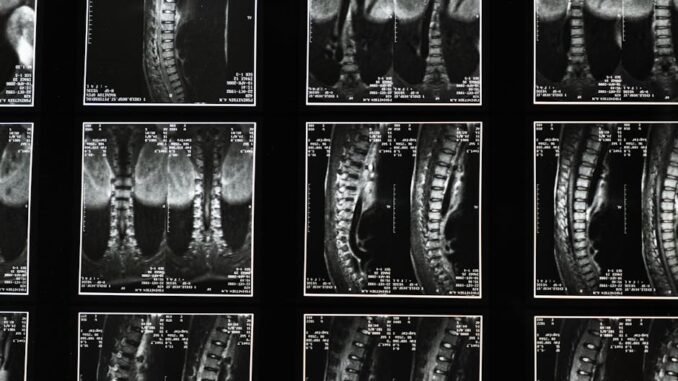
Summary
Quibim’s QP-Prostate, an AI-powered radiology tool, has received FDA authorization, marking a significant advancement in prostate cancer detection. This innovative software uses MRI scans to identify cancerous lesions with increased accuracy and efficiency, potentially transforming early diagnosis and treatment. The FDA clearance allows Quibim to expand into the US market and support healthcare providers in improving patient outcomes.
** Main Story**
So, you know how prostate cancer detection is kind of a big deal? Well, Quibim just got FDA authorization for their QP-Prostate, and honestly, it’s pretty exciting. It’s this AI-powered radiology tool that’s designed to analyze MRI scans, helping doctors find those tricky prostate cancer lesions more accurately and efficiently. The potential impact on early diagnosis and treatment could be huge, not to mention this approval really opens the door for Quibim to make a splash in the US market and empower healthcare folks to deliver better patient outcomes, which is what it’s all about, right?
AI-Driven Precision
What sets QP-Prostate apart? It’s not just another tool, it’s the only one that automates regional organ segmentation. What this means is it speeds up interpretation time and allows for a more focused, region-specific diagnosis. Think about the standard PSA blood tests; they’re good, but they have limitations, and they sometimes lead to unnecessary biopsies or even surgery. QP-Prostate? It’s non-invasive. It uses sophisticated computer models to really dig into the prostate anatomy, offering a much more detailed view.
The algorithms behind the software? They’ve been trained on a ton of biopsy data. This ensures, ideally, precise identification of lesions and even provides risk stratification to help with early, accurate diagnoses. I remember talking to a radiologist friend of mine, Sarah, and she was mentioning how they’re always looking for ways to improve accuracy and reduce false positives. Tools like this could be a game-changer for them. It’s the specificity, you see. It allows them to make better informed decisions, and that is critical.
Transforming the Diagnostic Landscape
This FDA clearance is more than just a win for Quibim; it’s a giant leap forward for refining prostate cancer detection and treatment overall. This positions them perfectly to support healthcare providers in the US, especially in the burgeoning markets of fusion biopsy and focal therapy. Let’s be real, radiology departments are often swamped with prostate MRI requests. This technology could seriously alleviate that burden. Imagine the time saved, the increased accuracy in detecting cancer, and the valuable insights it provides to oncology teams. It’s a win-win. This AI-driven tool really could unlock faster, more precise, and reliable diagnoses, which ultimately means better patient care and outcomes. Or at least, that is the idea behind it.
That said, I do think we should approach AI tools like this with a degree of critical thinking. Sure, the potential is amazing. But, it’s important to remember that it’s a tool to assist, not replace, medical professionals.
The Future is Bright, Right?
The development of QP-Prostate, it really does represent a significant jump in the fight against prostate cancer. Early detection? It’s everything. And QP-Prostate gives us another powerful, non-invasive way to help. As AI keeps getting better and better, its integration into medical tech will just keep transforming healthcare, improving the lives of so many people affected by prostate cancer. On the other hand, we’ll need to make sure things are fair and equitable with AI in healthcare. The future of prostate cancer detection is looking pretty good, you know, all thanks to innovations like this one.


The discussion around AI assistance versus replacement of medical professionals is crucial. How do you envision the training and certification processes evolving for radiologists and other specialists to effectively integrate AI tools like QP-Prostate into their workflow, ensuring both accuracy and responsible application?
That’s a fantastic point! The evolution of training is key. I think we’ll see more specialized modules added to radiology programs and potentially even new certification tracks focused on AI-assisted diagnostics. Standardized curricula and ongoing assessments will be vital to ensure responsible and accurate application of tools like QP-Prostate. What are your thoughts on the role of medical societies in shaping these training standards?
Editor: MedTechNews.Uk
Thank you to our Sponsor Esdebe
So, AI is going to solve all our problems now, huh? I wonder if QP-Prostate can also handle the paperwork and insurance claim denials? Because that’s the *real* bottleneck in healthcare these days.
That’s a great point about the paperwork and insurance claim denials. While QP-Prostate focuses on improving detection accuracy, the administrative side of healthcare is definitely a major challenge. Perhaps AI can eventually assist with streamlining those processes as well! What other areas of healthcare do you think AI could improve?
Editor: MedTechNews.Uk
Thank you to our Sponsor Esdebe
The specificity of QP-Prostate and its potential to reduce unnecessary biopsies is encouraging. Beyond prostate cancer, could similar AI-driven tools be developed for other cancers with high false-positive rates in screening, such as breast or lung cancer?